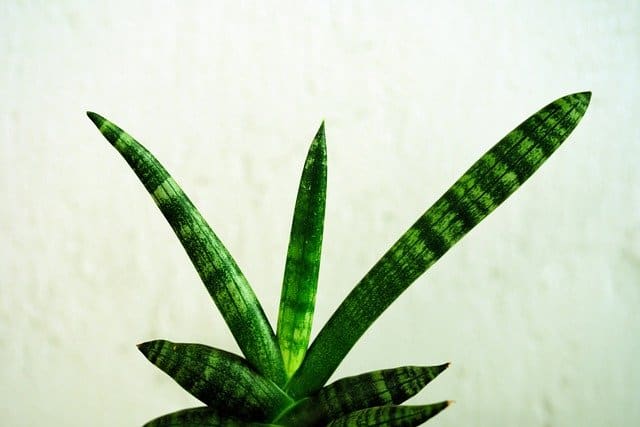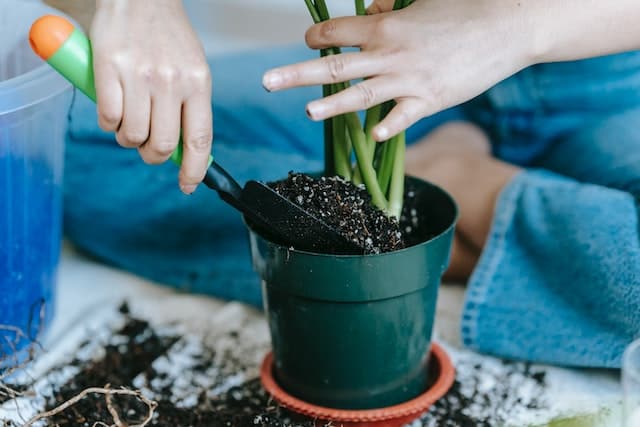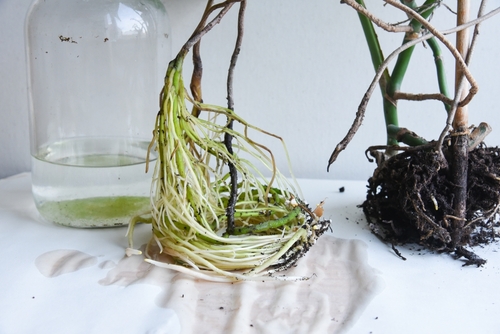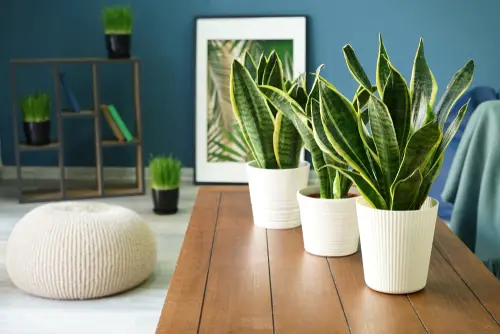Do snake plants need drainage? It’s possible that you’ve heard that snake plants are nearly invincible. While this is accurate, it is also crucial to keep in mind that it is only “almost invincible”. For example, letting your snake plant’s roots rot is the one sure fire way to destroy it.
Plant enthusiasts should use a pot with drainage holes to protect their snake plant from root rot, which is the worst killer of these plants. To ensure the long-term health of your snake plant, it is necessary to pay attention to the drainage of the pot in which it is planted; without proper drainage, your snake plant’s roots may become susceptible to root rot.
For instance, if you put your snake plant in a container without drainage holes, you must be very cautious not to overwater it since the extra water will remain in the container and cause the roots of your plant to rot.
Continue reading to learn more about snake plants and drainage, including whether snake plants need drainage, if a snake plant can grow in a container without drainage, as well as the top 4 most common problems that can arise when you plant your snake plant in a pot without drainage, and more.
What is A Snake Plant?

One of the most common and resilient types of houseplants is the snake plant, sometimes also commonly referred to as the Dracaena trifasciata.
Snake plants are known to grow to be approximately eight feet tall and have rigid, sword-like leaves. Although the color of snake plants can vary, many have leaves with green bands and frequently have a yellow border.
These plants are also simple to cultivate and sometimes practically unbreakable. They will also flourish in areas of the house that are nearly dark or in very intense light.
Overall, snake plants are considered a fantastic choice for amateur gardeners since it is difficult to kill. After all, these plants flourish both on the ground and in pots.
Even while this plant can withstand dryness, it’s crucial to remember that it may also become overwatered, which can result in root rot. So, you should only water this plant when the soil feels dry.
These plants, for instance, can last two months without water in the winter. This implies that throughout the summer, you should water your snake plant no more frequently than every two weeks.
Do Snake Plants Need Drainage?
Although drainage holes are not always necessary, snake plants cultivated in containers will be considerably easier to care for in a pot with holes.
Professional gardeners actually recommend that if you want to grow your snake plant to the fullest extent, you will almost inevitably need a pot with drainage holes to protect your snake plant from root rot, which is the worst killer of these plants.
Can You Grow A Snake Plant In A Container Without Holes?

Whether you put your snake plant in a pot with or without drainage holes is entirely up to you. Although it is possible to maintain a snake plant happily in a container without drainage holes, your plant will be far less prone to issues brought on by overwatering or soggy soil in a plant with them.
Why Do Snake Plants Need Drainage?
Most plants, including Snake Plants, require adequate drainage. Drainage holes at the container’s bottom allow excess water to drain and assist to avoid soggy potting mix.
Additionally, when you keep your plants in containers where the water is allowed to circulate through the soil, you can also help prevent the buildup of toxins from fertilizer and tap water that can harm the roots of your plant.
Overall, as stated above, water accumulating in the pot of your plant, which is what will occur in a pot without drainage holes, can and will be problematic for your snake plant.
What Problems Can Arise in Your Snake Plant If Its Pot Lacks Drainage?
1. You Snake Plant’s Root System Can Be Weakened
For survival, your snake plant requires a strong root system. Unfortunately, your plant will not only be vulnerable to many issues, like root rot and root burn, if its roots are submerged in water, but it also won’t be able to develop new, robust, healthy roots.
Take note that your plant’s development will also slow or even stop if its root system is unhealthy since it won’t be able to absorb nutrients. It might also droop and lose leaves, or possibly die altogether.
2. Your Snake Plant May Develop Root Rot

Fungal organisms thrive best in moist environments, which is why it’s ideal for them to survive and reproduce in the potting mix of moist plants.
These fungi swiftly proliferate and eat away at the roots of your plant in waterlogged pots by taking advantage of the damp environment, resulting in significant quantities of damage, including root rot.
Root rot symptoms can resemble those of droughts, such as dry, curled leaves and drooping branches. Therefore, in order to avoid root rot, it is essential to check the water level in your snake plant, before adding any more since giving extra water to a plant with root rot can and will make the condition worse.
In order to rectify the situation and return your snake plant to health before it develops severe root rot, find out which fungi are causing the issue, as not all fungi problems have the same resolution.
3. Your Snake Plant May Develop Root Burn
A container without drainage holes makes it far more probable that your snake plant will, unfortunately, have chemical buildup issues and root burn.
Root burn occurs when salts and minerals are included in fertilizers and tap water, and while they may be helpful to your plant in very tiny doses, they may also be quite damaging in greater amounts.
When these compounds accumulate around your plant’s roots, water cannot drain from the container. The roots are, therefore, damaged by this and are unable to grow properly.
Symptoms to be aware of if you are concerned that your snake plant has root burn include the browning of the leaves and roots as well as signs of slowed development.
4. Your Snake Plant Can Develop Oxygen Starvation
Usually, when we think of plants, we think of their requirement for carbon dioxide. This is true, but it is less well recognized that they also require oxygen. Through holes on their leaves known as stomata, plants take in carbon dioxide and oxygen. They also take in oxygen through their roots.
Unfortunately, the roots of your plant will start to suffocate if they are submerged in water, as they would be in soggy soil. This results in poor, stifled growth, yellowing leaves that eventually drop off, and the eventual death of your plant are signs of oxygen shortage.
Take note that root rot and oxygen insufficiencies are, unfortunately, related issues. Therefore, if your plant has one of them, it probably also has the other.
See a similar post: Snake Plant New Shoot
Final Thoughts
You may have heard that snake plants are virtually indestructible. Although this is true, it’s important to remember that they’re not completely invincible. For instance, the only definite method to kill your snake plant is to allow its roots to rot.
The biggest killer of these plants, root rot, could also be avoided by using a planter with drainage holes for snake plants.
For example, if you place your snake plant in a pot without drainage holes, you must be extremely careful not to overwater it since the additional water will remain in the pot and cause the plant’s roots to rot.
Frequently Asked Questions
How Much Drainage Do Snake Plants Need?
Snake plants need to drain completely. They require well-draining soil to thrive. It is important to ensure that the potting mix used for snake plants allows water to flow freely. Excessive moisture can lead to root rot. Hence, it’s important to avoid overwatering and provide adequate drainage.
How Should I Water a Snake Plant Without Drainage?
When dealing with a pot without drainage holes, it’s important to water sparingly and with caution. Since the excess water has no way to escape, you need to be mindful of not overwatering.
Add water slowly and in small amounts, allowing the soil to absorb it gradually. Be careful not to saturate the soil, as any water added will remain in the pot, which is bad for the roots of the plant.
Is It Recommended to Spray Water on My Snake Plant?
No, it is not advisable to spray water directly on the leaves of a snake plant. Unlike some other houseplants, snake plants are sensitive to having their foliage wet.
Watering should be done at the soil level, ensuring that the leaves remain dry. This is because wetting their leaves can promote rotting and potentially harm the plant.

Hey, I’m Lisa and I’ve been an avid gardener for over 30 years. I love writing, talking and living in the garden! Feel free to connect with me on my socials below

